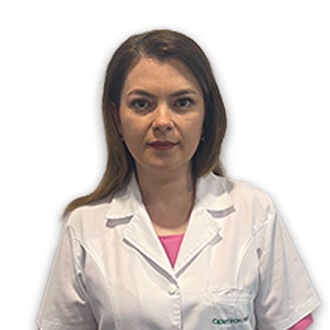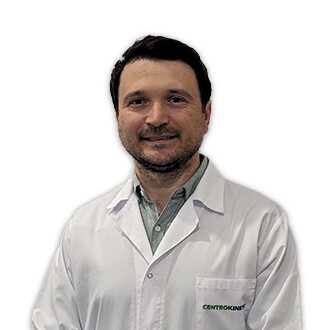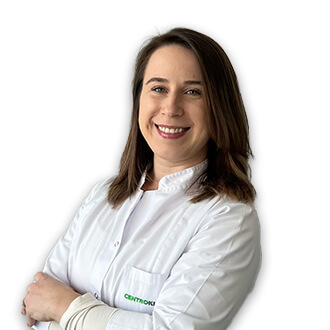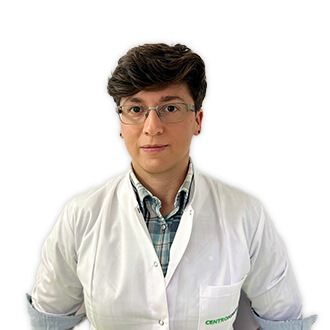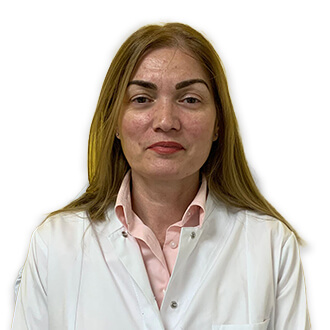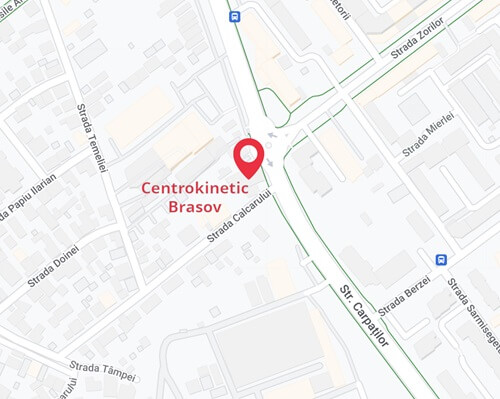About Menopause, Physical Exercise, and Physiotherapy Procedures

What is Menopause?
It is the period in a woman's life when menstruation stops. Most often, it is a natural, normal change in the body that occurs between the ages of 45 and 55. It can also be surgically induced (hysterectomy and oophorectomy—removal of the uterus and ovaries), leading to a subsequent decrease in estrogen levels. Menopause can sometimes be caused by medications used for chemotherapy or hormonal therapy (HT) for breast cancer.
Menopause is officially diagnosed when menstruation is absent for 12 consecutive months, marking the transition to postmenopause. During menopause, a woman’s ovaries stop releasing eggs. The body produces fewer female hormones: estrogen and progesterone. Lower levels of these hormones cause menopause symptoms. After menopause, a woman can no longer become pregnant.
Symptoms of Menopause
The symptoms of this period vary from woman to woman. They can last for up to five years or longer and may be more intense for some women than others. Symptoms of surgical menopause can be more severe and appear more abruptly.
Eventually, menstrual periods stop, and the following symptoms may appear:
- irregular heartbeat (palpitations),
- hot flashes and night sweats,
- skin flushing,
- sleep problems (insomnia),
- decreased sexual desire,
- memory problems, mental fog, and headaches,
- mood swings, including irritability, depression, and anxiety,
- involuntary urine leakage or urinary incontinence.
Decreased estrogen can cause changes in the vaginal mucosa and dryness, making intercourse painful and increasing the risk of vaginal infections. Joint and muscle pain, as well as reduced endurance, may also occur.
Examinations, Tests, and Investigations During Menopause
Blood and urine tests may be recommended to identify hormonal changes, including levels of Estradiol, Follicle-Stimulating Hormone (FSH), and Luteinizing Hormone (LH).
Bone loss increases in the first years after the last menstruation. The DEXA test, which measures bone mineral density, shows bone loss related to the subsequent development of osteoporosis. DEXA (Dual-energy X-ray Absorptiometry), also known as bone densitometry, is an imaging investigation that uses X-rays to measure bone density and strength. DEXA results can determine the risk of osteoporosis (bone mass loss) and fractures. Bone mineral density (BMD) testing is recommended for all women at the age of 65 if they haven’t already undergone it. It may be recommended earlier if there is a higher risk of osteoporosis due to family history, surgeries, or medications.
Some women experience vaginal bleeding after menopause, which can be an early sign of issues such as cancer. An endometrial biopsy, vaginal ultrasound, or both may be performed.
Cholesterol levels may change, increasing the risk of heart disease. Regular blood tests and specialist consultations are recommended.
Treatment for Menopause and Postmenopause
Treatment for menopause and postmenopause includes lifestyle changes, diet, physical procedures (physiotherapy), exercise therapy, HT (hormone replacement therapy), or combinations of these. The choice depends on factors such as the symptoms, overall health, including other chronic conditions, and personal preferences.
1. HT or Hormone Replacement Therapy
Hormone replacement therapy can help with severe hot flashes, night sweats, mood issues, or vaginal dryness. It involves treatment with estrogen and sometimes progesterone. It is essential to know the full medical and family history. Many studies have questioned the health benefits and risks of HT, including the risk of developing breast cancer, heart attacks, strokes, and blood clots (hypercoagulability). However, HT use during the first 10 years after menopause is associated with a lower chance of death. Current guidelines support using HT for treating hot flashes.
Specific recommendations are:
- HT may be started in women who have recently entered menopause.
- It should not be used in women who entered menopause many years ago, except for vaginal estrogen treatments.
- It should not be used longer than necessary.
- Some women may require prolonged estrogen use due to bothersome hot flashes.
HT is a safe treatment for healthy women. Women taking HT should have a low risk of stroke, heart disease, blood clots, and breast cancer. To reduce the risks of estrogen therapy, a lower estrogen dose or a different preparation (e.g., vaginal cream or a skin patch rather than a pill) is recommended. Skin patches appear safer than oral estrogen, as they avoid the increased blood clot risk observed with oral estrogen use.
2. Dietary Changes
Smoking cessation is recommended. Avoid caffeine, spicy foods, and alcohol. Consume foods containing soy (which contains isoflavonoids with antioxidant properties). Add calcium and vitamin supplements through diet or supplements. Pay attention to the caloric and nutritional content of foods in the diet.
3. Physical Exercises, Kinesiotherapy Programs, Kinetofitness, Therapeutic Massage, Lymphatic Drainage, Myofascial Therapy, and Physiotherapy Procedures
Specialists recommend increased physical activity during the period leading up to menopause, throughout menopause, and in postmenopause. Physical exercise is accessible to everyone, does not cause illness, has no side effects, and poses no health risks as long as it is conducted under the recommendation and supervision of specialists. Oxygenation and proper tissue nutrition are essential during menopause and postmenopause. Furthermore, movement therapy has never caused harm; on the contrary, it offers numerous health benefits for women during menopause and helps prevent illnesses associated with this life stage.
Daily Kegel exercises. These strengthen the vaginal and perineal muscles. Try counting the contractions of the perineal muscles and separating them from the contraction of other muscles. Practice slow, deep breathing whenever a hot flash starts. Try six breaths per minute. Meditation is also recommended.
Weekly physical exercise or kinesiotherapy programs. These are particularly useful, especially if you experience the following symptoms alongside the typical menopause symptoms (hot flashes, sweating, irritability, depression, anxiety):
- weight gain,
- water retention in tissues causing swelling in the lower limbs,
- joint pain, spinal pain,
- dizziness, vertigo, headaches,
- reduced intellectual performance and concentration,
- muscle weakness, mental fog,
- osteopenia or osteoporosis with fracture risk,
- lack of motivation, insomnia, chronic fatigue,
- morning muscle pain,
- pain in peripheral joints (knees, hips, shoulders, hands, ankles, feet, fingers),
- physical deconditioning, difficulty walking.
Kinesiotherapy and kinetofitness programs ensure muscle toning. They target the abdominal and back muscles, may include breathing exercises, posture recovery programs, and weighted exercises to ensure proper skeletal mineralization, preventing osteoporosis and joint arthritis. These can involve specialized equipment like vibration platforms for gait re-education and muscle toning, PRAMA rooms, weight machines, and neurological re-education programs such as dual-tasking, all aimed at maintaining health, well-being, and preventing illnesses.
Exercises to improve joint mobility and flexibility. These exercises target all tissues and ensure coordination with movement control and balance during walking. Programs are adapted and supervised by physiotherapists specializing in movement therapy conducted throughout menopause.
Therapeutic massage or manual therapy. These exceptional procedures ensure tissue nourishment and muscle relaxation, releasing muscle tension in the spine, shoulders, and limbs. They promote restful, high-quality sleep and alleviate feelings of fatigue.
IASTM or Myofascial Therapy. These relieve tension and muscle contracture, improve local circulation, and reduce localized pain in the shoulders, back, lumbar region, sacrum, pelvis, and limbs. They are particularly useful during menopause accompanied by fibromyalgia.
Lymphatic drainage of the lower limbs. After a day of standing or sitting at a desk, excess fluid in the subcutaneous tissue of the lower limbs can lead to painful cellulite, tissue damage, and joint pain. This is especially useful during menopause.
TECAR therapy, LASER therapy, Diamagnetic therapy, electrotherapy, cryotherapy, muscle electrostimulation. These physiotherapy procedures are beneficial during menopause as they alleviate described symptoms and maintain health. They counteract the decompensation of cardiovascular, respiratory, and musculoskeletal conditions and manage endocrine-metabolic changes in the body during menopause. All programs should be recommended by a specialist doctor and conducted under the supervision of experienced physiotherapists in an organized setting.
4. Other Innovative Therapies, Techniques, or Technologies Successfully Used During Menopause
High-intensity transcutaneous magnetic stimulation, REMED chair therapy. This modern method treats neuromuscular conditions using a powerful 3-Tesla magnetic field. The device features a large applicator, shaped like a chair, designed specifically for genitourinary conditions. Treatment can be performed through clothing, penetrating deep into both soft and hard tissues. Programs target urinary incontinence, perineal muscle hypotonia after childbirth, during menopause, or in postmenopause.
NESA technology. The non-invasive neuromodulation technology NESA XSignal® is a painless method that optimizes the functioning of the autonomic nervous system by emitting coordinated electrical impulses, restoring the electrical potential of all cell membranes in the body. It accelerates recovery times by improving nervous system function and recovery after injuries. It reduces fatigue by sustainably increasing energy and vitality, improves sleep quality, and gradually reduces stress and anxiety. It also alleviates symptoms of overactive bladder.
Hyperbaric oxygen therapy. This therapy improves tissue oxygenation and ensures a proper metabolic level to counteract trophic changes throughout the body during menopause. Its regenerative effects on mucous membranes can be observed after the first sessions.
BUCHAREST TEAM
CLUJ NAPOCA TEAM
BRASOV TEAM
MAKE AN APPOINTMENT
FOR AN EXAMINATION
See here how you can make an appointment and the location of our clinics.
MAKE AN APPOINTMENT








































